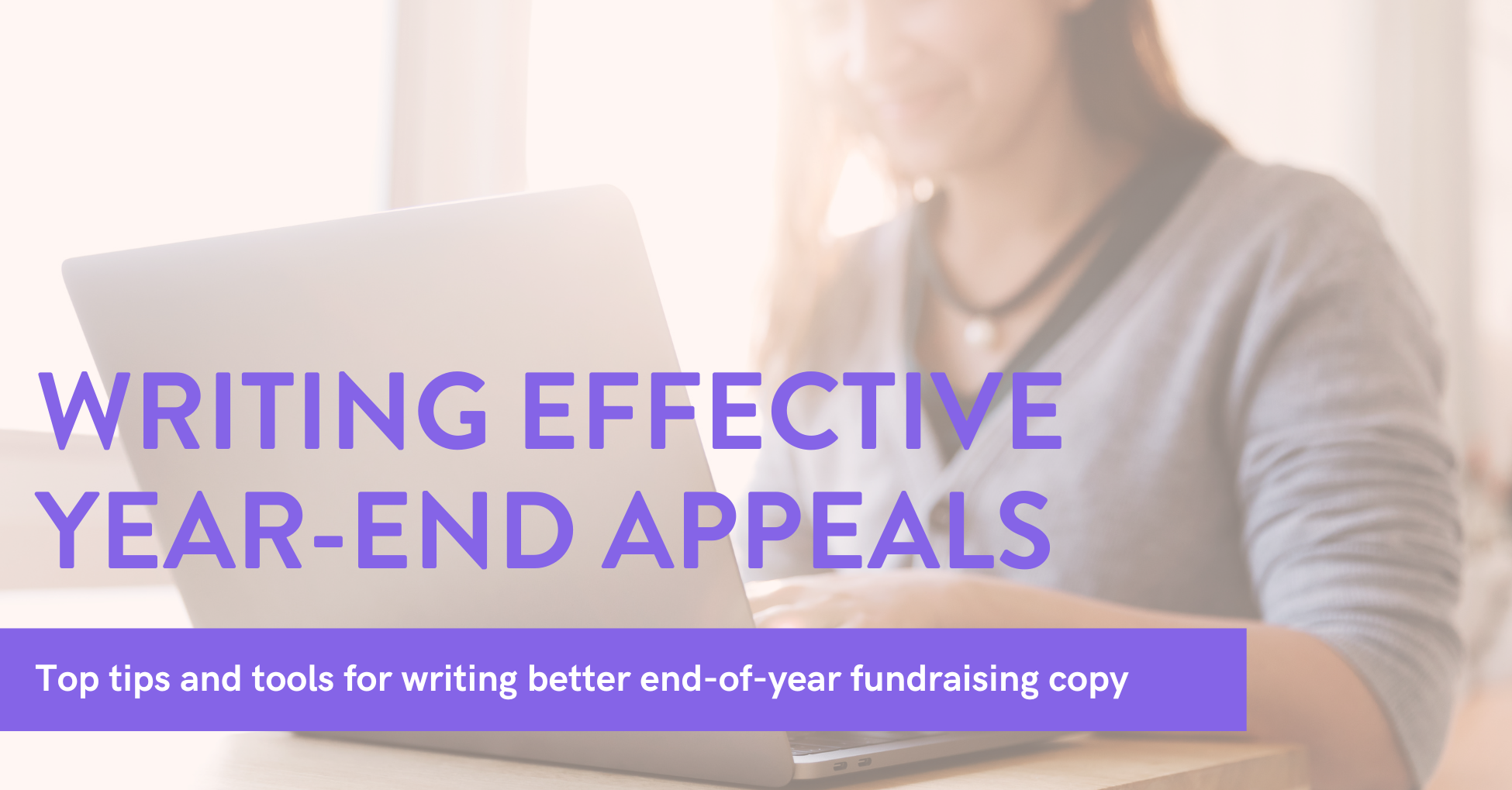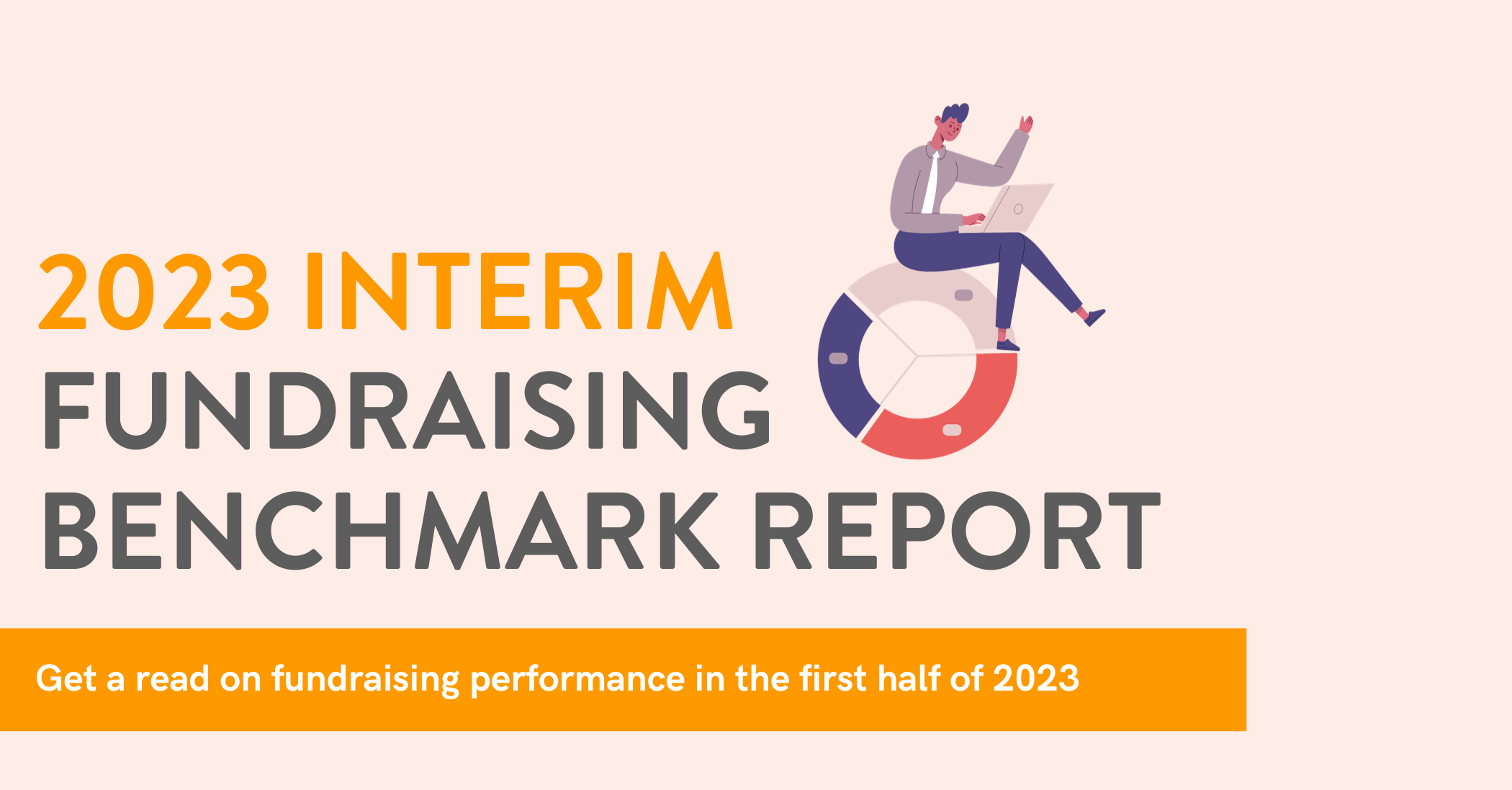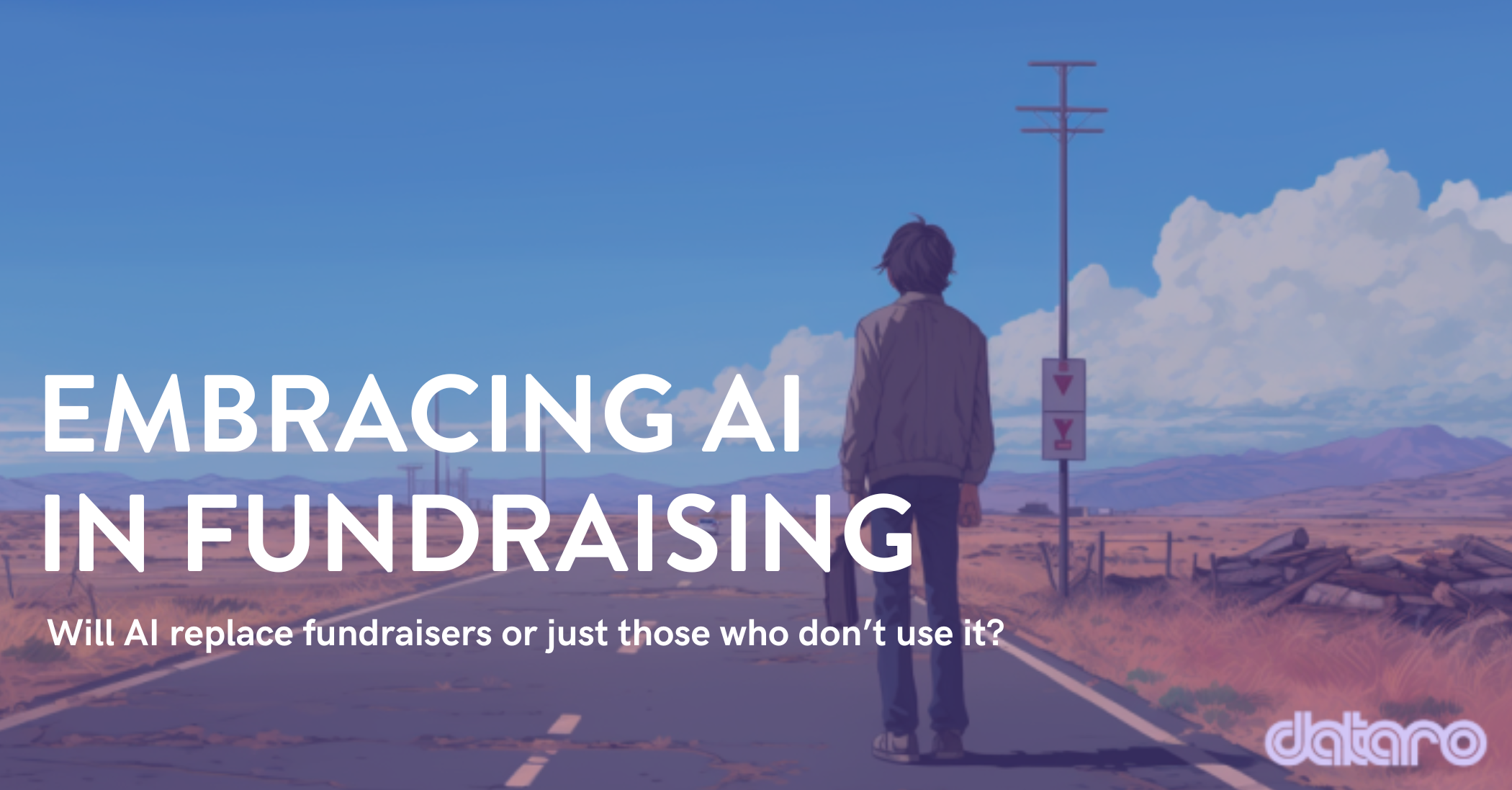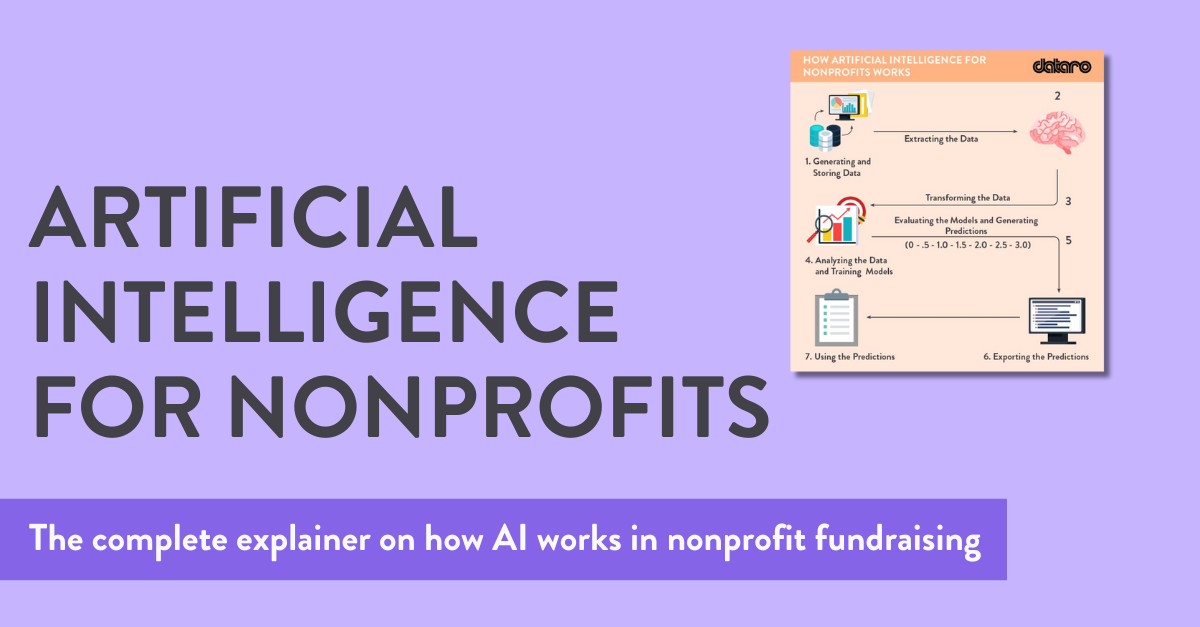
Artificial Intelligence for Nonprofits: Complete Explainer
Chris Paver – 16 February 2024
Artificial intelligence for nonprofits has been a trending topic for quite a while now. Even before the challenges of 2020 forced organizations to adapt their tech strategies, AI and machine learning for nonprofits were generating a lot of buzz—and a lot of confusion.
A deluge of announcements and thinkpieces over recent years has made it clear that AI-driven fundraising is the next major trend for savvy nonprofits. However, without a clear understanding of how this technology actually translates into on-the-ground fundraising results, exciting tech developments can be more confusing than useful for your fundraising team.
What exactly is artificial intelligence for nonprofits? What is machine learning? How can they actually drive smarter fundraising?
If you’ve been asking questions like these, you’re not alone. In this crash course, we’ll walk through all the essentials and show how AI technology has evolved to finally deliver everyday value for nonprofits of all sizes. Here’s what we’ll cover:
- Frequently asked questions
- How nonprofits use artificial intelligence
- Real-life examples of AI-driven fundraising
- How artificial intelligence for nonprofits works
- Why artificial intelligence matters for nonprofits
At Dataro, our entire mission is to help nonprofit organizations raise more through AI-powered technology. AI-driven strategies can and should play a role in 2024 and beyond. We have to start by cutting through the clutter of buzzwords and misconceptions so that we can learn how this technology is actually leveraged to drive smarter fundraising. Let’s dive in.
Artificial Intelligence for Nonprofits: FAQ
AI and machine learning have quickly become powerful tools for nonprofits and other fundraising organizations. However, it’s hard to get up and running with any type of new technology without a clear understanding of what exactly it is, what it does, and how it fits into your operations. Let’s start with the basics:
What is artificial intelligence?
Artificial intelligence (AI) is a type of computer science focused on building smarter machines that can perform tasks that would typically require human thought. The technology that this type of research produces is often called “artificial intelligence” or “AI-driven technology.”
By replicating the complex comparisons and judgment calls that come easily to the human brain, AI-powered systems are intended to help people streamline activities that would otherwise eat up their time. For nonprofits, this means more time to actually execute fundraising strategies instead of spending all day studying data in order to refine those strategies.
What is machine learning for nonprofits?
Machine learning (ML) is the underlying process that drives artificial intelligence. A machine learning system analyzes sets of data to find complex patterns in order to “learn” how that data will likely perform in the future. With a steady stream of incoming data, a machine learning algorithm can adapt based on how accurate its past insights and predictions were.
Machine learning systems can use hundreds of different data features or factors to make complex connections. While a human brain can often identify data trends and relationships instinctively, a well-trained machine learning algorithm can uncover trends that even experienced users might miss on their own.
What is predictive modeling?
Predictive modeling involves using data to find patterns that help to predict future outcomes.
In the context of AI technology, predictive modeling is driven by the broader process of machine learning in order to create data-driven, real-time predictions. The machine learning algorithm continuously analyzes incoming data and the relationships between those data points to create a model of how future data is expected to perform. Over time, the machine learning tool will refine this model to produce increasingly accurate predictions.
What is propensity modeling?
Propensity modeling is a form of predictive modeling. Rather than simply predicting what your future data will look like, propensity models dig deeper to predict the likelihood that individuals will complete certain actions.
For nonprofits using AI-driven tools, propensity models can be used to predict a range of actions, such as the likelihood that a donor will churn, convert to a monthly giving program, or make a major gift.
How do nonprofits use AI?
Nonprofits can use artificial intelligence to streamline and improve the segmentation process, which can drastically boost their fundraising results and efficiency.
Simply put, artificial intelligence, driven by machine learning, takes the guesswork out of segmentation.
With well-trained machine learning algorithms, the right tool will use predictive and propensity models to provide your nonprofit with constantly-updated and increasingly accurate lists of donors who are likely to take a particular action. In an everyday context, these predictions may take the form of automatically generated lists or easily filtered propensity scores right in your CRM or donor database. We’ll dive deeper into segmentation and how nonprofits use AI in a section below.
What types of nonprofits use artificial intelligence?
Previously, artificial intelligence technology was out of reach for many nonprofits with limited budgets or tech capacities. Today, organizations of all shapes and sizes can use artificial intelligence to fundraise in smarter, more efficient ways. Large and small nonprofits, universities, and healthcare institutions have all found success with AI-driven fundraising.
Why invest in artificial intelligence for nonprofits now?
AI tools are a smart investment now because the COVID-19 pandemic and the post-COVID fundraising landscape are requiring nonprofits to use their data in smarter ways than ever before. However, while more nonprofits are realizing the immense value of collecting data to guide their strategies, much fewer of them actually have the time, resources, and expertise to generate value with that data.
AI technology can fill the gap between collecting data and putting it to work for your mission. Luckily, AI and machine learning technology have evolved to deliver everyday value for larger numbers of nonprofits. AI-style features that score prospects are cropping up everywhere, as are more comprehensive machine learning tools (like Dataro) that offer ground-up AI technology.
Looking at the bigger picture, it’s also important for nonprofit organizations to recognize the changing roles that they play in society and how modern technology should help them. 87% of surveyed nonprofits expect to spend more on digital engagement over the next two years. However, as nonprofit legal scholar Philip Hackney writes,
“Nonprofits often don’t imagine that they should have the same capacities as for-profits, like the latest tech. But as nonprofits take on more and more responsibility in communities, they need to reimagine their roles and what they can accomplish.”
The barriers to entry for cutting-edge tech like artificial intelligence have fallen, meaning it’s more accessible for more missions. Increased investment in digital engagement needs to involve new technology like AI that helps you raise more with less and efficiently grow your impact.
How is AI being used in fundraising?
AI is almost certainly already being used in some of the software or tools that nonprofits are using in their fundraising practices already.
But the biggest opportunity for using AI in fundraising right now is to help you run more efficient fundraising programs deepen the nonprofits’ understanding of their supporter base and how they engage with donors.
At Dataro, we can think about AI technologies as helping fundraisers answer the following questions about your nonprofits’ donors and fundraising activities:
-
WHO should we contact?
-
WHEN should we contact them?
-
HOW much should we ask for and HOW should we reach out?
-
WHAT should we say to them?
Machine Learning to answer the “WHO”, “WHEN” and “HOW”
An area where AI is extremely useful is in data analysis and predicting the future behavior of your existing donors. In fundraising, Machine Learning can be used to analyze donor data and identify patterns that can help organizations better target potential donors.
Machine Learning models (like the ones we build at Dataro) are adept at analyzing extremely large datasets – like your donor database – to accurately identify patterns and trends, and predict future outcomes.
In fundraising, this means that Machine Learning models can help nonprofits identify their best donors for various fundraising efforts, based on their likelihood to give a gift if solicited or stewarded effectively.
Typically and historically, nonprofits perform some form of segmentation to target their fundraising campaigns – that is, taking the database and applying some simple rules to group donors together (like recency, frequency, monetary value). And based on these segments, people would either be included in the audience list for solicitation or excluded.
The problem with traditional segmentation is that the donor segments used are very broad. While some likely donors will be included in the segment, many donors who are not likely to be receptive to the ask will also be included. This leads to campaign wastage and poor donor experiences.
Instead of treating donors like a segment, AI helps nonprofits treat donors like individuals. It also helps fundraisers to understand donors better and develop very accurate ideas about what each individual donor is likely to be interested in and what types of campaigns or asks they are most likely to be receptive to.
But predictive AI models don’t just identify which donors are most likely to give. They can also be used to tell fundraisers:
- who and when to ask for donations
- how many donors to include in your campaign list for best ROI
- how much to ask an individual donor for to improve response rates
Machine Learning can also help organizations optimize their fundraising campaigns. By analyzing data on past campaigns, it can identify which tactics were most effective and which were less so. This allows organizations to adjust their strategies and focus on the tactics that are most likely to result in donations.
Large Language Models to answer the “WHAT”
Up until now AI hasn’t really been able to answer the what in fundraising. That is, what are you going to say to donors (what will you communicate for the best outcomes).
But that has changed with the next generation of generative AI technologies like GPT and other large language models. Using GPT technology and tools like Dataro’s new AI Assist, fundraisers can now generate entirely new pieces of content from scratch, in seconds.
For example, if a fundraiser has developed a first draft piece of campaign content, like a direct mail letter, they can use large language model tools like GPT and AI Assist to enhance the content or create a multitude of variations for different types of donors across different communications channels. For example, a fundraiser could use these tools to tailor a direct mail letter specifically to lapsed donors, or turn that content into an appeal email targeting young active donors, or even use it to generate content to increase the number of monthly donor conversions via social media.
Developing highly tailored communications can only help improve the donor experience. For the donor, they will be more engaged and have a better relationship with the charity that speaks to them like an individual, not a segment. For the fundraiser, they will be able to create a larger volume of tailored communications in significantly less time, with better fundraising outcomes.
Real-Life Examples of AI-Driven Fundraising
Let’s take a closer look at two success stories from nonprofits using AI-driven fundraising strategies:
![]()
Greenpeace – Raising more with direct mail and retaining donors through AI insights
Greenpeace AU worked with Dataro to use artificial intelligence and drastically improve their fundraising efforts on two fronts: direct mail donation appeals and reducing churn in their regular giving program.
By digging into the charity’s entire history of fundraising, engagement, and communication data, the AI technology identified deep patterns and assigned each donor a propensity score that indicates their probability of giving through a direct mail appeal. These scores made it easy to develop a highly-focused list of the donors who’d be most likely to give after receiving an appeal. Then, we compared our AI-generated list with one that Greenpeace created using traditional RFM segmentation techniques. Using both lists, the campaign moved ahead as planned, and the results were amazing:
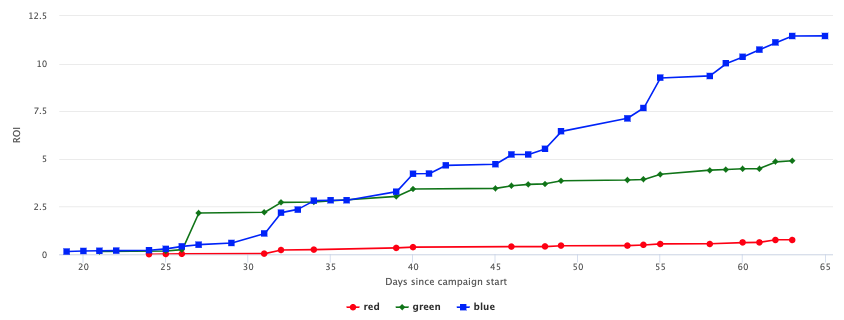
This chart shows the ROI from each discrete group of donors that were identified in the two mailing lists:
- Red: Donors chosen using traditional RFM segmentation but not flagged as worthwhile by the machine learning tool
- Green: Donors selected by Dataro’s machine learning algorithm but not chosen through RFM segmentation
- Blue: Donors who appeared in both the AI and RFM mailing lists
In this comparison, we found that donors in the “red” segment returned an ROI of less than 1, meaning Greenpeace actually lost money by contacting them with direct mail appeals. The “green” segment of donors that the traditional segmentation strategy missed had an ROI of 5, while the “blue” segment (donors on both lists) had a whopping ROI of 12. The “green” segment added a substantial return that Greenpeace might have easily missed out on without AI-driven fundraising tools to guide their appeals.
Explore the complete case study to learn more about our process and results.
Greenpeace also turned to AI technology to help reduce churn in their regular giving program. Dataro’s machine learning tools assigned their regular givers with churn propensity scores, immediately flagging the most “at-risk” donors who’d be likely to miss three consecutive gifts in the next six months. With this list in hand, Greenpeace reached out to donors at risk of churning with personal “thank you” calls. Those who received calls were much less likely to churn than those who didn’t:

In this case, Dataro helped Greenpeace retain 64 donors who would’ve otherwise lapsed, resulting in an estimated $23,040 saved for the organization!

Parkinson’s UK – Finding more gift opportunities with more targeted outreach
Parkinson’s UK used AI-driven supporter predictions to refine an appeal with laser accuracy. During their seasonal direct mail campaign, Dataro’s machine learning algorithm studied their historical fundraising data to develop a targeted list of the donors who’d be most likely to give to the campaign. We compared the results from this AI-driven approach with the results from the organization’s own donor selection strategy:

Dataro’s AI-driven predictions achieved a response rate of over 14% versus a response rate of just under 9% for the traditional segmentation approach. This translated into a potential revenue increase of 23% when focusing on donors identified through machine learning. More importantly, the AI predictions resulted in over 2,800 individual gifts (versus around 2,500 for the traditional approach) despite working with a smaller list of potential donors!
Machine learning helped Parkinson’s UK conduct a more focused and efficient campaign—raising more support for their mission while spending less on printing and mailing costs. Explore the complete success story to learn more about this campaign and its results.
How Artificial Intelligence for Nonprofits Works
Next, let’s dig into the details. How exactly does artificial intelligence work? The exact process can vary based on the particular context or types of tools that you’re using, but here’s how Dataro’s AI and machine learning tools work for nonprofits:
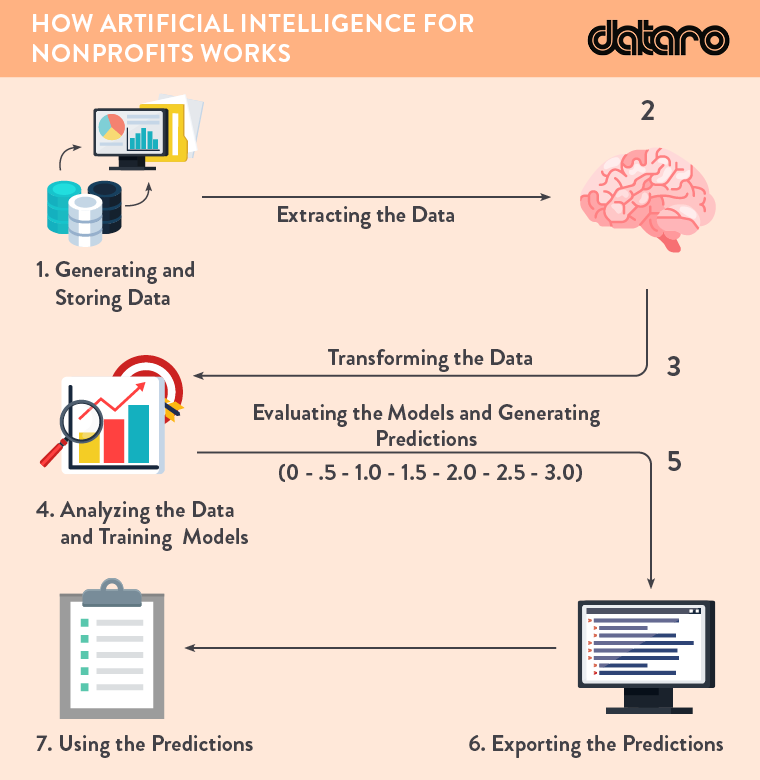
- Your nonprofit stores and organizes donation and engagement data in your CRM on an ongoing basis.
- The machine learning software periodically extracts this data, excluding all personally identifiable donor information.
- The data is transformed into a set of hundreds of different “features,” or specific markers like donor age or gift recency, for analysis and to shape the final model that will be used to generate predictions.
- The machine learning technology analyzes the dataset to find trends, patterns, and relationships between all of the relevant features identified in Step 4. It then begins training model for every propensity you’ll want predictions for, like appeal giving or churn likelihood.
- The artificial intelligence software then evaluates the trained models to determine how effectively they can generate predictions based on your unique dataset. Using the best model, the software generates “Propensity Scores” and “Propensity Ranks” for each donor in your database, showing you how likely individuals will be to take certain actions and how they compare against the rest of your donors.
- The artificial intelligence software exports these findings, scores, and rankings back to your CRM to use in your campaigns and appeals.
- The process reoccurs over time to update your database with reliable predictions as you continue engaging with donors and generating new fundraising campaigns. Dataro loads new predictions once a week, ensuring your data is continually kept up-to-date.
When Dataro integrates directly with your CRM, the entire process is seamless. Automatically generated and refreshed predictions will be easily searchable in your database for immediate use in your next campaign. Simply sort your donors by their Propensity Scores and Ranks for whatever type of appeal you’re crafting—no complex or time-consuming filters involved.
When searching for new AI tools, pay attention to the depth or level of complexity that a system uses when analyzing data. Some basic prospect-scoring systems will only study a handful of data features or factors to make predictions, but Dataro’s ground-up AI solution typically uses up to 400 discrete factors in a single algorithmic model to generate deeper insights and predictions over time, taking a 360-degree view of the data.
Watch our 2-minute explainer for a closer look at the Dataro machine learning process and the frontend user experience.
Why Artificial Intelligence Matters for Nonprofits
We touched briefly on why AI and machine learning matter for nonprofits in an earlier section, but it’s definitely worth reiterating: Artificial intelligence is a game-changing way for nonprofits to truly begin making the most of their data.
The Big Picture
Artificial intelligence technology has become more feasible and more strategically important for nonprofits. The continued increase in CRM adoption by nonprofits, coupled with the broader rise of data-driven strategic thinking in general, has meant that organizations of all sizes have more data to work with than ever before. Data is an invaluable way to shape your strategies, learn from your performance, and better connect with supporters.
However, there’s still a major gap for many nonprofits. Having more data doesn’t necessarily mean your team has the time, knowledge, and resources to actually use it in the most effective and efficient ways possible.
AI tech’s barriers to entry, like cost and technical complexity, have drastically shrunk in recent years, so these tools can (and increasingly will) fill the gaps between data collection and putting it to actual use in future campaigns and appeals.
Especially as nonprofits play increasingly important roles in their communities today and as the sector recovers from the COVID-19 pandemic, truly making the most of your data in order to pursue your mission efficiently will be critical.
The Bottom Line
Zooming in, AI has major benefits for nonprofits down to your everyday operations. Artificial intelligence tools and AI-driven fundraising tactics can help you:
- Raise more money for your mission
- Spend less money on broad outreach
- Target donors much more specifically and personally
- Save your team time on both data management and campaign planning activities
- Reduce your cost of fundraising
So what’s the end result of implementing AI in your fundraising operations? You’ll raise more money to put directly towards your mission, not overhead expenses or the fundraising process itself.
Take Dataro for a test drive to see these benefits in action. And to keep learning about AI and machine learning, study up with these additional resources:
- The Fundraiser’s Guide to RFM Segmentation. Traditional donor segmentation techniques are an important part of nonprofits’ strategies that can be improved by AI. Learn more with this crash course.
- 3 Easy Ways to Get Started with AI for Fundraising. Looking for more information on the specific ways that AI can help you raise more? We’ve outlined the top 3 use cases and benefits to consider.
- Dataro Case Studies. Learn more about the ways our artificial intelligence software for nonprofits has helped real organizations see real, on-the-ground results.
- Top 12 Prospect Research Tools by Double the Donation. AI is often used in the context of prospect research for major giving. This roundup highlights a few top providers and the different ways they can streamline your research efforts.








